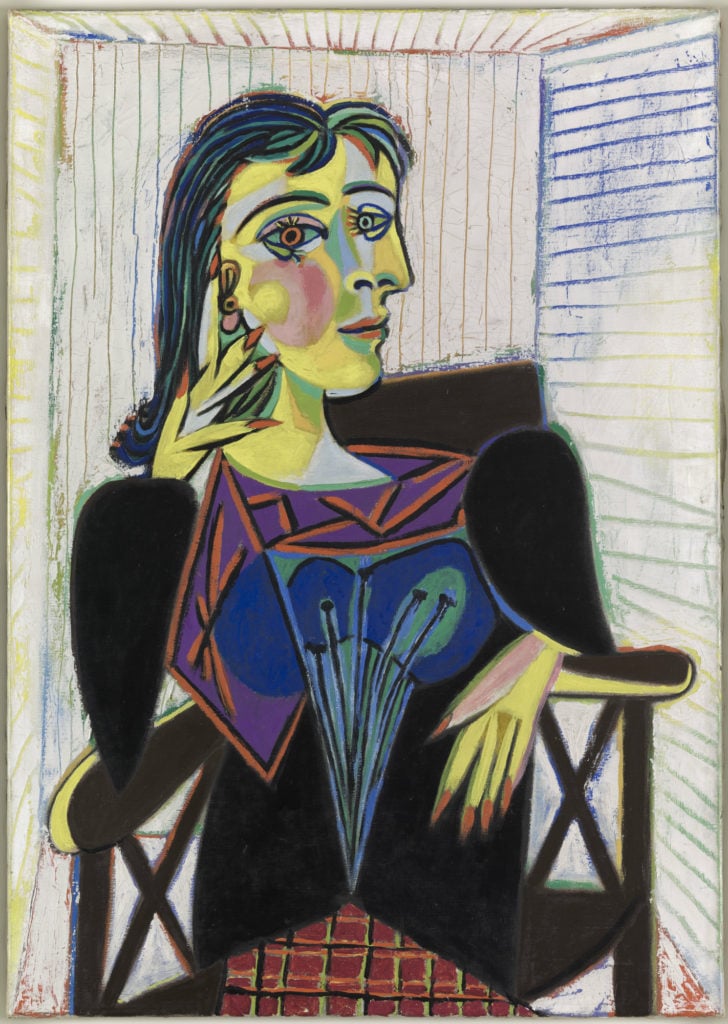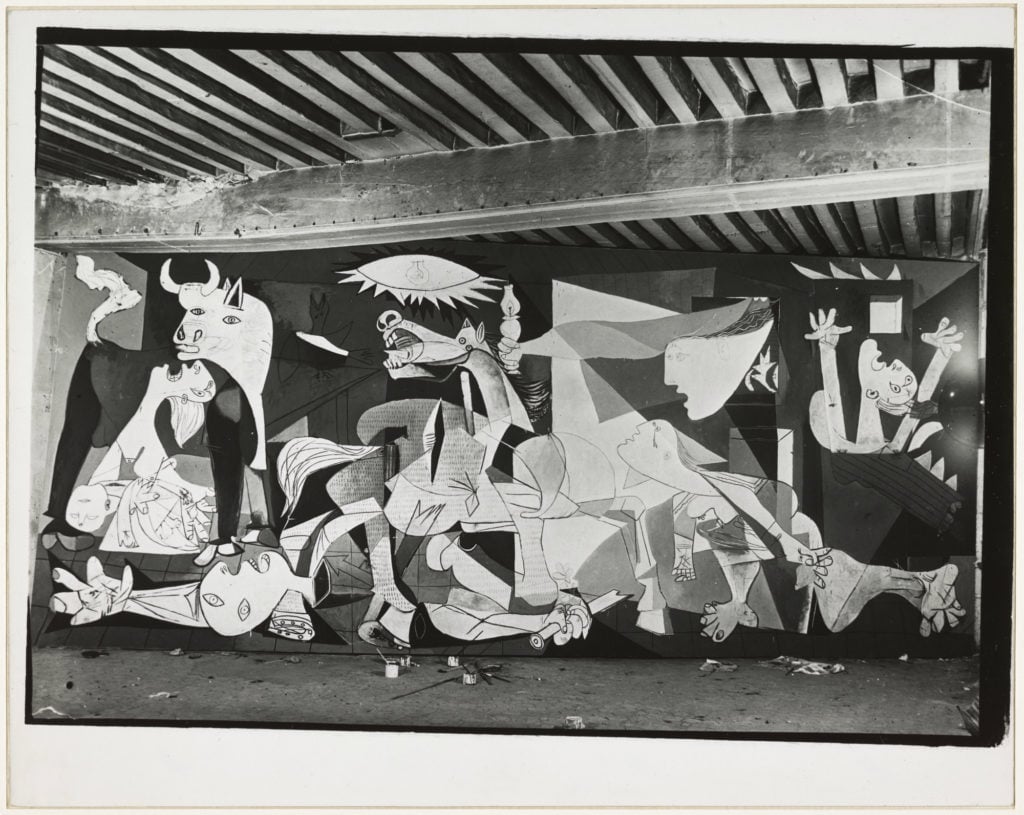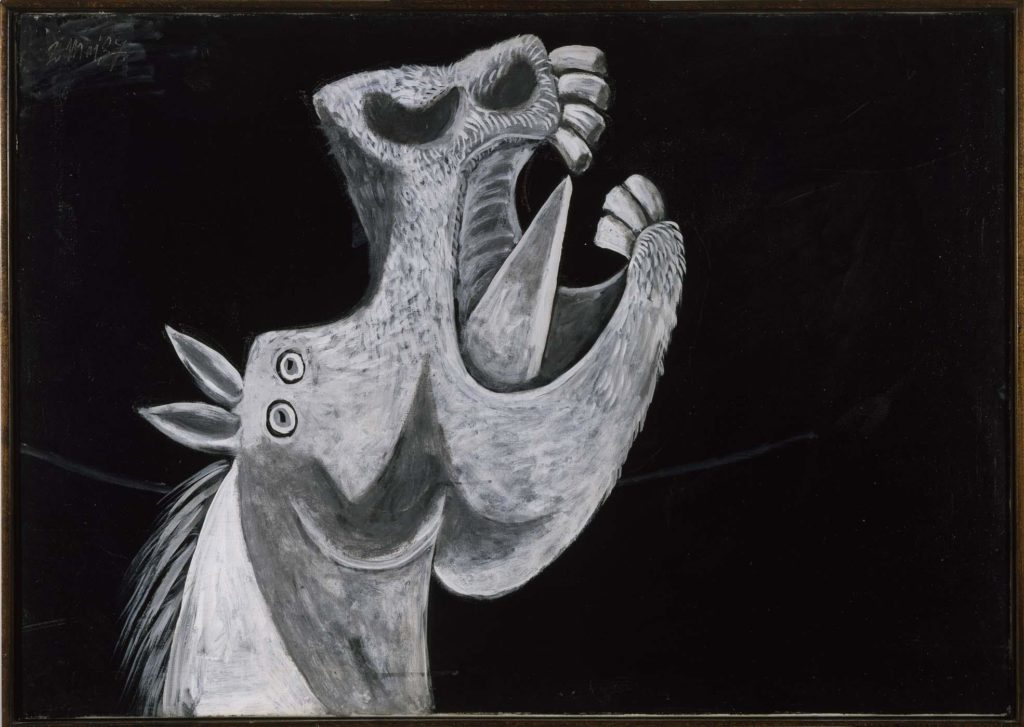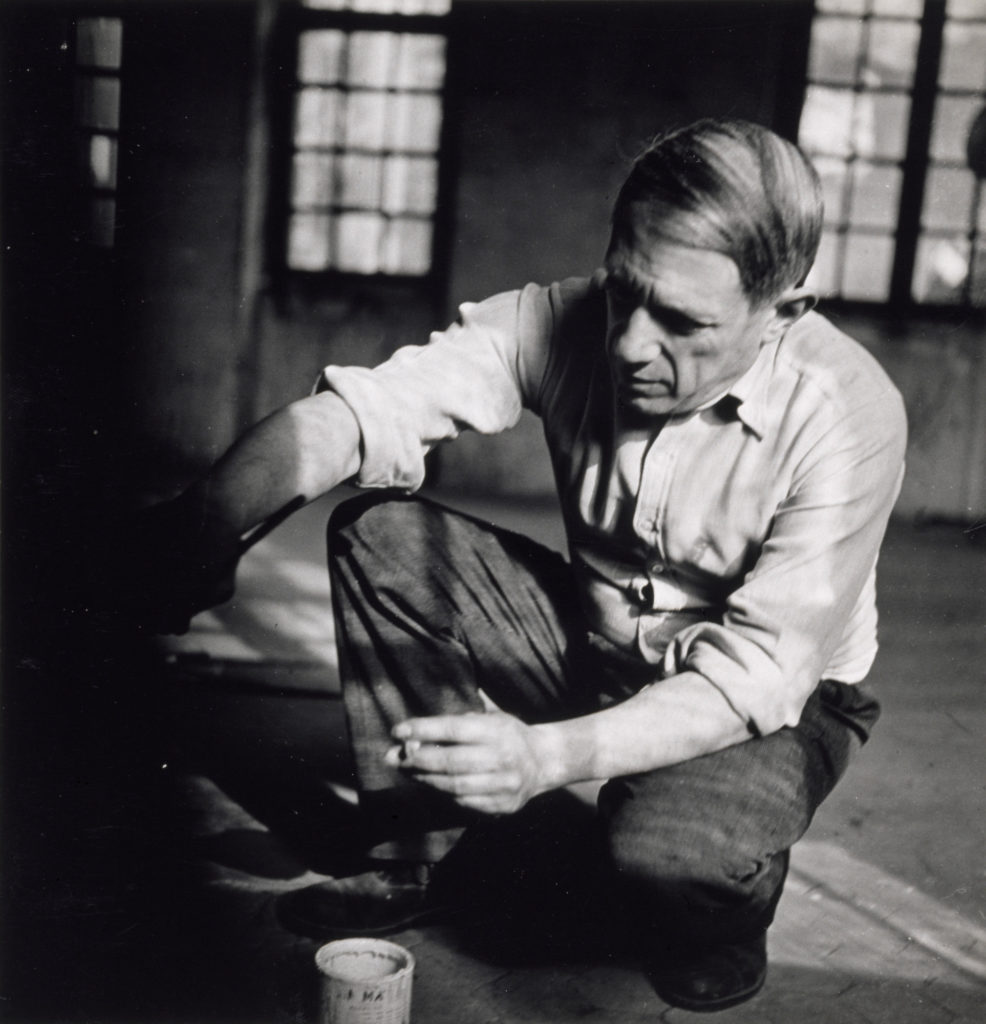Art & Exhibitions
Does Dora Maar Deserve Credit for ‘Guernica’? A New Show Says Her Art Inspired Picasso’s Breakthrough Work
The upcoming exhibition at Paris's Picasso Museum also showcases the giant stretcher Picasso used to make the painting.

The upcoming exhibition at Paris's Picasso Museum also showcases the giant stretcher Picasso used to make the painting.

Javier Pes

The fascination with Picasso, it seems, is bottomless. New exhibitions in London and Paris throw new light on unexplored corners of his legacy.
“Picasso 1932,” the blockbuster exhibition now on view at London’s Tate Modern, vividly chronicles how one of the Spanish artist’s 1930s paramours, Marie-Thérèse Walter, inspired the artist’s mid-career “year of wonders.” The exhibition began at the Musée Picasso-Paris last fall, and now that Paris institution is following it up with another show that rethinks Picasso’s legacy, this one about his most famous painting, Guernica.

Dora Maar, photograph of Guernica, May-June, 1937, Musée National Picasso-Paris, copyright RMN-Grand Palais, Mathieu Rabeau and Succession Picasso, 2018.
In the new exhibition focusing on the great antiwar canvas, Dora Maar, the mistress who superseded Walter in Picasso’s life and imagination by 1937, will be revealed as far more than just a talented muse.
Emilie Bouvard, a curator at the Musée Picasso-Paris who has organized the “Guernica” show, tells artnet News that Maar did not simply document Picasso painting the great mural. In fact, her Surrealist photography influenced the work itself.

Pablo PicassoEtude pour Guernica (Tête de cheval) (1937). Image courtesy Musée de la Reine Sofia.
Photo © Musée de la Reine Sofia, Madrid
© Succession Picasso.
“She was melding the studio and the work of art, which is typical of Dora Maar’s photographs,” Bouvard says. “You never know where you are.” Picasso also melded interiors and exteriors as he channeled his outrage at the aerial bombing of the Spanish town in the Basque region by Franco’s Nazi German ally during the Spanish Civil War.
The Paris exhibition, which opens on March 27 (and is on view through July 29), has been organized in partnership with Madrid’s Museo Nacional Centro de Arte Reina Sofía. The Madrid museum has lent many preparatory sketches Picasso made for Guernica (1937)—though not, of course, the finished work. (Its condition is more closely checked in the Reina Sofía than the Mona Lisa is in the Louvre.)

Dora Maar’s photograph of Picasso working on Guernica (1937). Musée National Picasso-Paris. Copyright RMN-Grand Palais, Mathieu Rabeau and Succession Picasso, 2018.
Despite this absence, the Musée Picasso-Paris has pulled off a coup: For the first time ever, it is showing the surviving parts of the original oak wood stretcher that Picasso ordered for Guernica.
The presence of the stretcher will convey a sense of the work’s scale and hint at its many travels. When it was rediscovered three years ago by the Museum of Modern Art in New York in its storage facility, the American institution sent it to the Reina Sofía, which has yet to show it.
The exhibition tells the story of Guernica’s epic tour of Europe (but not Spain) and the US after the 1937 Paris Exposition to raise money for the Spanish Refugee Relief Campaign. Picasso’s ongoing support of Spanish refugees is revealed in the exhibition. He helped artists get out of detention camps in the South of France, explains Bouvard.
Yet the curator was disappointed to find that the stretcher only has one sticker from its many travels. The torn label, which helped MoMA identify and then piece together the 11 mysterious pieces of oak, says “San Francisco Museum of Art” and “Picasso.”
Works by contemporary artists also help give a sense of the influence of Picasso’s enormous work, as well as its artistic legacy. These include Robert Longo’s charcoal drawing, Picasso Redacted (After Picasso’s Guernica, 1937) (2015), as well as works by Art & Language and Damien Deroubaix, among others.
After “Picasso 1932” and “Guernica,” what’s next for the Musée Picasso-Paris, which has been reinvigorated under director Laurent Le Bon’s leadership? Bouvard says that following this experimental show centered on an absent painting, the museum is going to borrow a selection of Picasso masterpieces and devote a room to each.
“Guernica” is at the Musée Picasso-Paris March 27 through July 29, 2018.
“Picasso 1932: Love, Fame, Tragedy” is at Tate Modern, London, until September 8, 2018.